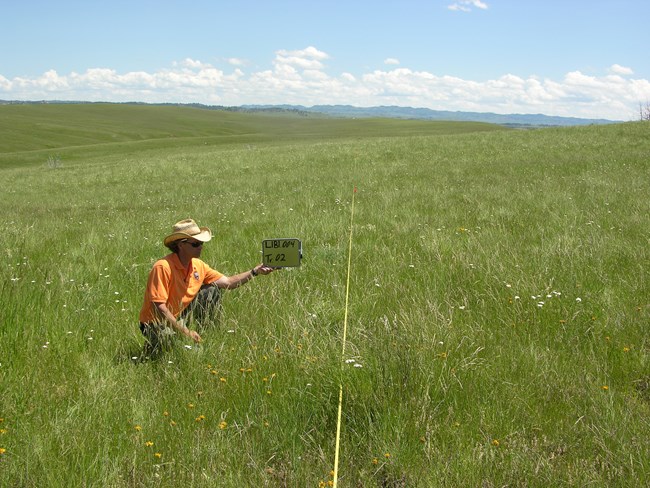
Importance/IssuesVegetation composition, structure, and soils are important habitat elements in all Rocky Mountain Network parks. Vegetation structure and composition are fundamental determinants of wildlife habitat characteristics and quality, visitor experiences, cultural/historic landscape quality (in the cases of Little Bighorn Battlefield National Monument and Grant-Kohrs Ranch National Historic Site), and basic ecosystem functioning (e.g., via primary production; cycling of carbon, nitrogen, and other nutrients; and micro-climate controls). In addition to providing information about the condition of these ecosystems, data from this monitoring will help characterize parkwide ecosystem responses to other Vital Signs (drivers), including Weather and Climate, Wet and Dry Deposition, Landscape Dynamics, Invasive/Exotic Plants, and habitat conditions for Focal Species (e.g., elk, grizzly bear, and endemic Great Sand Dunes National Park and Preserve insects). Preliminary Monitoring Objectives
Potential Measures
Protocol Development and StatusThe Rocky Mountain Network Upland Vegetation and Soils protocol was published in 2011. We monitor upland vegetation and soils using this protocol in a subset of long-term monitoring plots every year in Florissant Fossil Beds National Monument, Grant-Kohrs Ranch National Historic Site, and Little Bighorn Battlefield National Monument. Parks This Protocol is Monitored At
Vital Signs This Protocol Monitors
Publications & ReportsSource: NPS DataStore Saved Search 2216. To search for additional information, visit the NPS DataStore. Source: NPS DataStore Saved Search 1234. To search for additional information, visit the NPS DataStore. Source: NPS DataStore Saved Search 1235. To search for additional information, visit the NPS DataStore. |
Last updated: April 19, 2018
